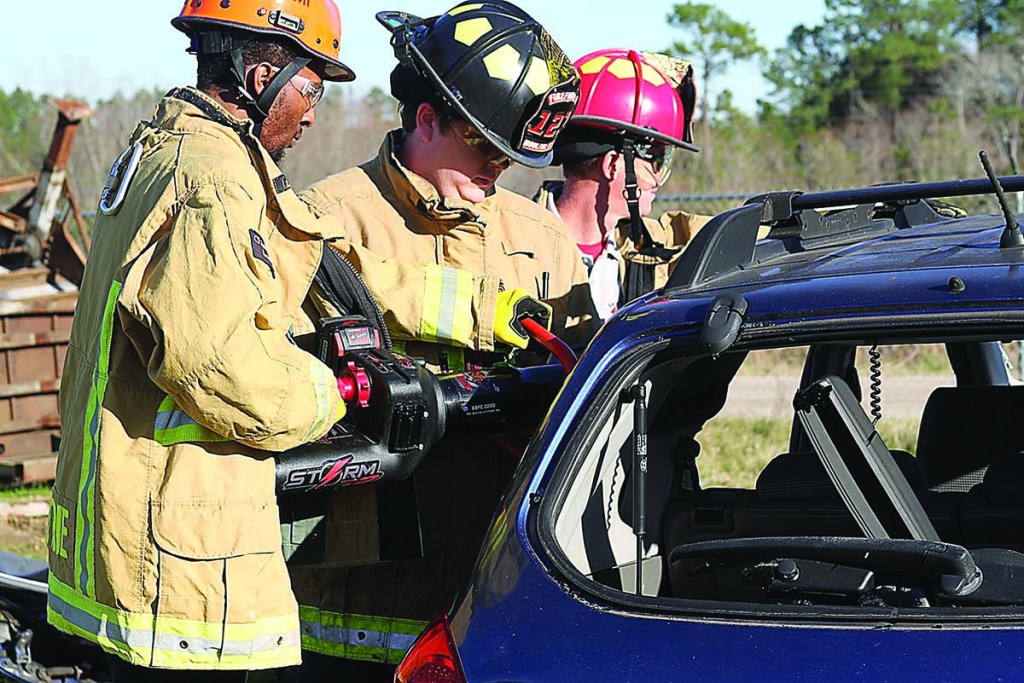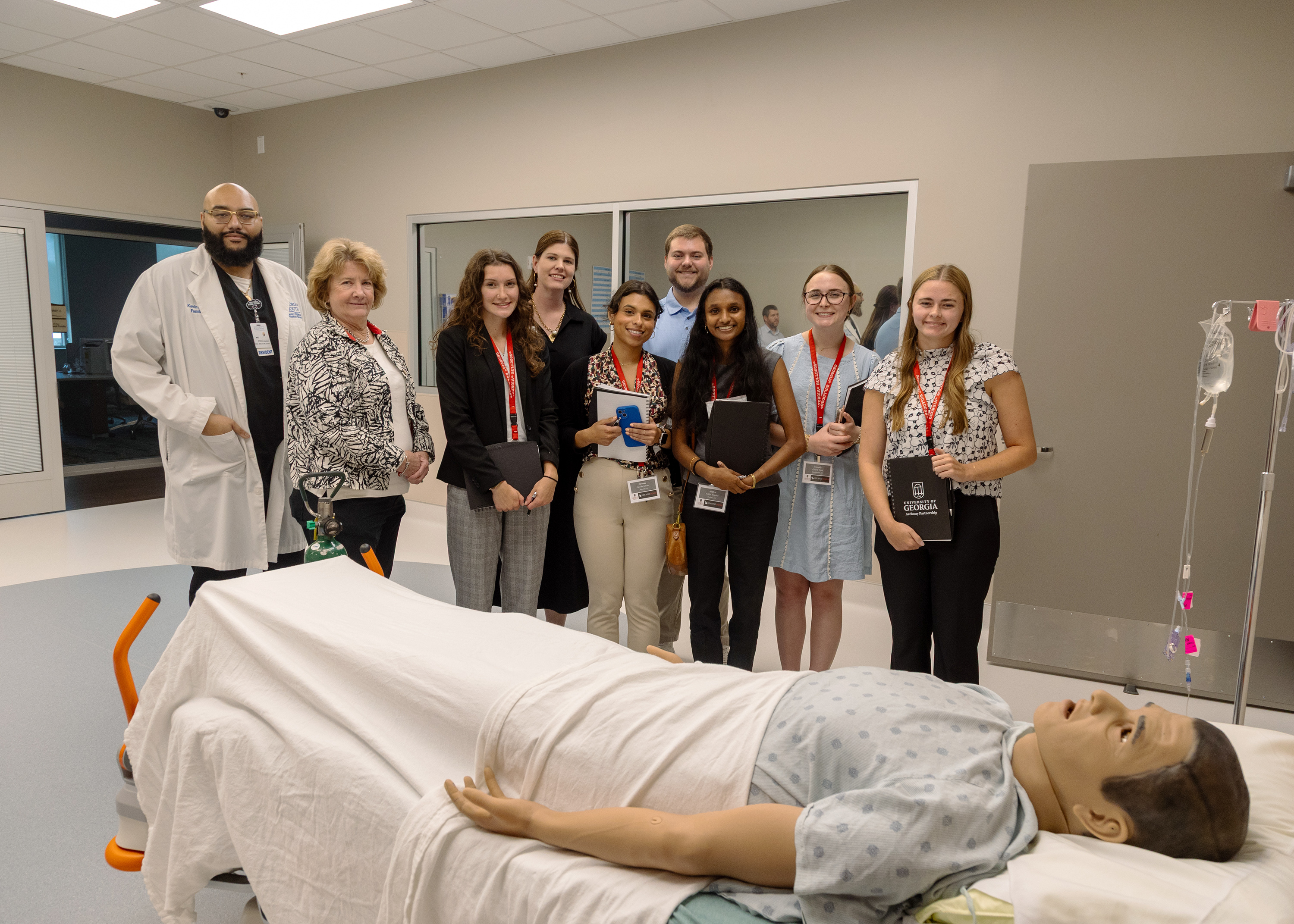Testing out the tools: Reporter gets a look into a firefighter’s daily tasks
Published 6:32 pm Thursday, January 9, 2020

- Moultrie Observer reporter Bryce Ethridge, left, is assisted by two Moultrie firefighters as he breaks open a car door with the spreader, one of three new tools the Moultrie Fire Department recently received. The MFD put on a demonstration of the tools for media organizations from across the area Wednesday.
MOULTRIE, Ga. — I ask myself all the time what it’s like to be a hero. The thought has fascinated me ever since I saw Sam Raimi’s “Spider-Man” in 2002. Now, I’m not going to say the superheroes in comic books will never exist in our world — words have power after all — but hero has a different connotation in our world. It could be someone who fights for their country, someone who stands up to a bully or someone who puts their life on the line for the sake of others.
But as a hero there’s one thing that you’ll always need: strength — mentally and physically. That’s what I learned after the Moultrie Fire Department invited me out to test their new TNT emergency tools Wednesday.
These tools included a cutter and spreader (I didn’t get to try the combination tool) with an introduction to lifesaving via window breaking.
Side note: Shattering glass felt good. It’s so satisfying to not get yelled at or be punished for it like my pre-teen self did when he tried it out of curiosity. But back on topic.
The firefighters took it easy on us — me and my counterparts from other media organizations — letting us experience the full process of what it’s like to save someone trapped in a car. It must be quick and careful.
A safety blanket covers the trapped passenger as we yelled “breaking glass,” a signal for them to be prepared for just that. There was no actual passenger of course, but that’s what we had to imagine.
You might think pulling them out comes next, but no. You’re going to have to pull that door off its hinges. Sounds fun, yes, but it’s a tiring effort.
So, next we used the spreader, a heavy-duty piece of machinery that weighs over 40 pounds and can spread between 30,000 and over 170,000 pounds. Again, it sounds easy and fun, but moving it back and forth to find a pressure point and reveal the locking mechanism on the side of the door can get tiring real fast.
The real test of strength is holding it up on the door’s side trying to bust the door off its lock. It’s a constant task of resetting, opening the tool, closing the tool and reset once again until you hear an explosive “KLINK”. It’s the same process with getting the door off its hinges, just without the “KLINK.”
I tried holding it by myself, but after the second readjustment, my arms were noodles. I’m sore today so it’s back in the gym for me.
The car’s roof was next to go. Why do that when the doors are already gone? So, I asked Moultrie Fire Sgt. Alex Garner. He said it gives easy access to a trapped passenger should they be injured or the doors be obstructed.
“When we bring patients out the vehicle, we like to bring them on backboards,” Garner said. “If they’re laid back, we can slide them directly out without having to turn them and bring them out the door. Taking the roof off helps us lift that patient out without compromising [their position]”
Using the cutter, another heavy-duty piece of machinery weighing over 60 pounds, the firefighters cut at the car’s support beams.
I say firefighters and not “I” because the last tool left me needing a short rest. Removing the roof isn’t an everyday occurrence though, Lt. Bo Sprunger explained.
“Most of the time the top gets taken off if the car is completely demolished,” Sprunger said.
I jumped in on the third beam, attempting to cut it, but 15 seconds into holding it, I just knew I couldn’t do this by myself. I wondered is this how firefighters felt, you know, the weight of the world — someone’s life — on one’s shoulders.
Of course, they maintain regular exercise — the city even gives them an hour a day to exercise at the YMCA — but everyone gets tired. How do you push yourself at that point? That’s what I asked Sprunger. He said it’s a team effort.
“We kind of do it in shifts,” he said. “All four of us are not operating the tools at one time. When one of us gets tired, we just swap out.”
The new tools are slightly lighter than their 2003 predecessors and more maneuverable since they’re battery-powered instead of pneumatic.
“Now you can just pick them up,” he said. “[In the past] when you got ready for another tool you always had to stop, cut the tool off, unhook the hoses, get the other tool, hook it up and then go.”
It was a bigger hassle for sure, but ease came over time. It’s still big job though. And whereas I couldn’t hold the tool up for long alone, these heroes have a team behind them and the training to get the job done.





